The Great Pyramid Of Giza Tourism offers an unforgettable journey through ancient Egypt, but planning can be overwhelming. Let SIXT.VN be your trusted travel partner, providing seamless solutions for exploring the wonders of Hanoi and beyond. Discover the allure of historic sites, enjoy convenient airport transfers, and experience luxurious accommodations. Plan your perfect trip with our tailored travel consultation, and discover Hanoi’s iconic landmarks and captivating culture.
1. Discovering the Allure of the Great Pyramid of Giza Tourism
The Great Pyramid of Giza, a testament to ancient ingenuity and architectural prowess, beckons travelers from across the globe. Constructed nearly 5,000 years ago, this iconic structure stands as the largest of the Giza pyramids and the sole remaining wonder of the ancient world. Tourism to the Great Pyramid offers a unique opportunity to step back in time and marvel at the grandeur of ancient Egypt.
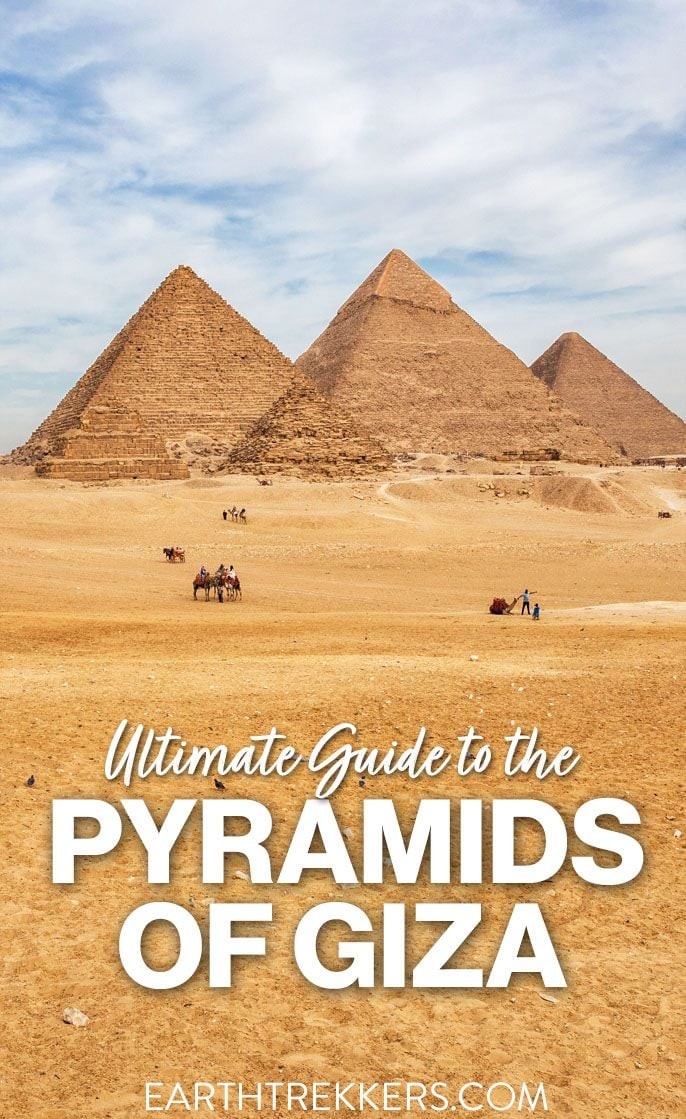 Great Pyramid of Giza
Great Pyramid of Giza
1.1. What Makes the Great Pyramid of Giza so Special?
The Great Pyramid, originally standing at 146.6 meters (481 feet) tall, held the title of the world’s tallest man-made structure for over 3,800 years. Built during the reign of Pharaoh Khufu (Cheops), it’s estimated to comprise over 2.3 million stone blocks, each weighing an average of 2.5 tons. The precision and skill involved in its construction are still marveled at today.
1.2. Why Is Great Pyramid of Giza Tourism Important for Travelers?
Tourism to the Great Pyramid is significant for several reasons:
- Historical Significance: It provides a tangible link to one of the most fascinating periods in human history.
- Cultural Immersion: Visiting the pyramid allows travelers to immerse themselves in the rich culture and heritage of ancient Egypt.
- Awe-Inspiring Experience: The sheer scale and majesty of the pyramid leave a lasting impression on all who visit.
1.3. How Can SIXT.VN Enhance Your Great Pyramid of Giza Experience?
While SIXT.VN primarily operates in Vietnam, we can still assist international travelers planning a trip to the Great Pyramid. We offer tailored travel consultation, providing information on transportation, accommodation, and local guides to ensure a seamless and enriching experience.
2. Planning Your Great Pyramid of Giza Adventure
Embarking on a journey to the Great Pyramid requires careful planning. From obtaining visas to selecting the right time to visit, every detail contributes to an unforgettable experience.
2.1. What Are the Visa Requirements for Visiting Egypt?
Visa requirements vary depending on your nationality. Travelers from many countries can obtain an Egypt e-Visa online or a visa on arrival at Cairo International Airport. However, it’s essential to check the latest requirements from your local Egyptian embassy or consulate.
2.2. When is the Best Time to Visit the Great Pyramid of Giza?
The best time to visit the Great Pyramid is during the cooler months, from October to April. During this period, temperatures are milder, making it more comfortable to explore the Giza Plateau. Avoid visiting during the summer months (May to September) when temperatures can soar above 40°C (104°F).
2.3. What Should You Pack for Your Trip to the Great Pyramid?
Packing appropriately is crucial for a comfortable and enjoyable trip. Here’s a checklist of essential items:
- Lightweight and breathable clothing
- Comfortable walking shoes
- Sunscreen, sunglasses, and a hat
- A reusable water bottle
- A camera to capture the incredible sights
- Any necessary medications
2.4. What Is the Best Way to Get to the Pyramids of Giza?
Getting to the Pyramids of Giza from Cairo is relatively straightforward. Here are a few options:
- Taxi: Taxis are readily available in Cairo, but be sure to negotiate the fare beforehand.
- Uber/Careem: Ride-sharing services like Uber and Careem are a convenient and often more reliable option than traditional taxis.
- Tour: Many tour operators offer guided tours to the Pyramids of Giza, often including transportation.
- Metro and Bus: While more budget-friendly, taking the metro and bus can be time-consuming and less convenient for tourists.
2.5. What Are the Entry Fees and Opening Hours for the Giza Plateau?
As of 2025, the entry fees for the Giza Plateau are approximately 700 EGP per adult and 350 EGP per student (with a valid ID). Additional tickets are required to enter the Great Pyramid (900 EGP) and the Pyramid of Menkaure (280 EGP). The Giza Plateau is typically open from 7 am to 4 pm daily. It’s always a good idea to check the official website for the most up-to-date information.
3. Must-See Attractions at the Giza Plateau
The Giza Plateau is home to more than just the Great Pyramid. Exploring the surrounding attractions will enrich your understanding of ancient Egyptian history and culture.
3.1. The Great Pyramid of Khufu (Cheops)
The centerpiece of the Giza Plateau, the Great Pyramid is an awe-inspiring structure that dominates the landscape. Marvel at its sheer size and imagine the incredible effort required to build it.
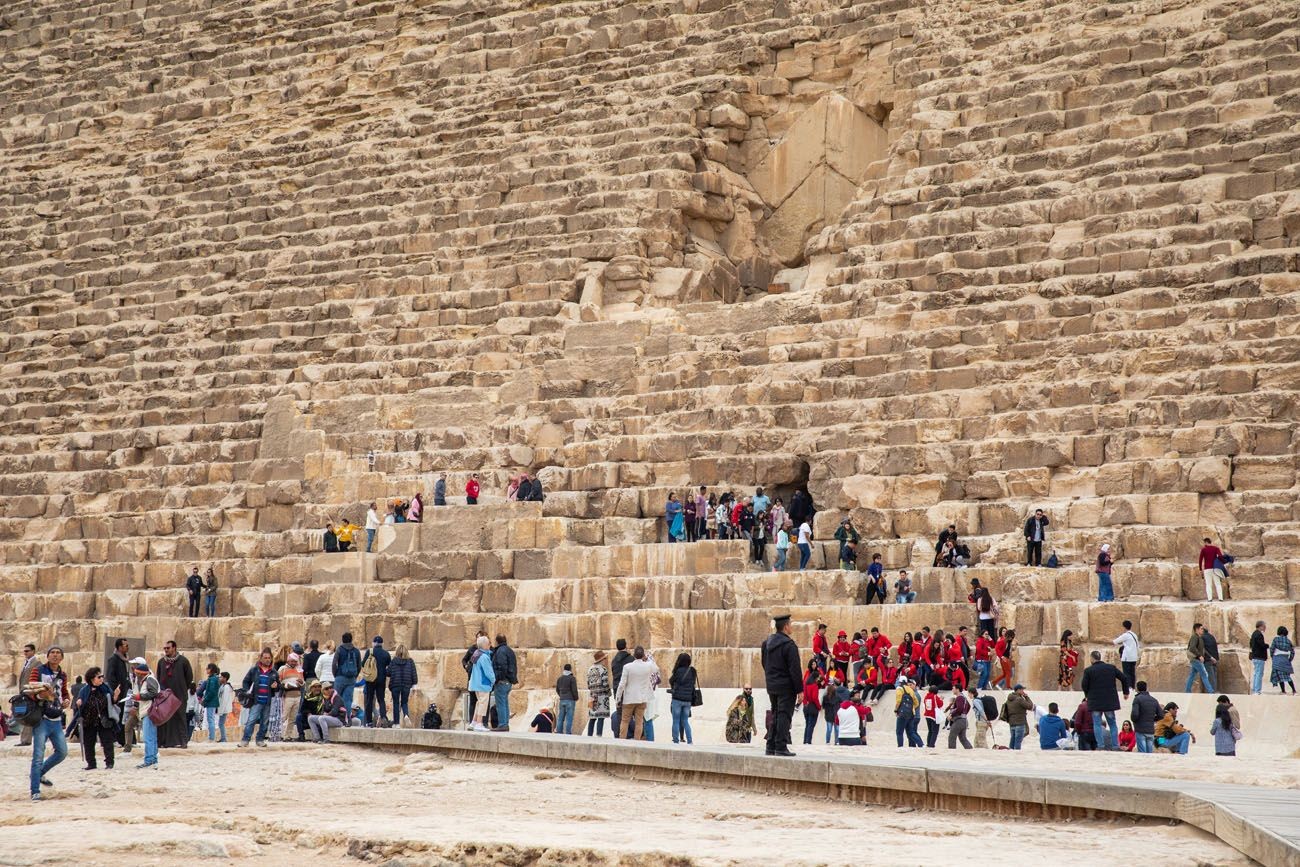 Entrance into Great Pyramid
Entrance into Great Pyramid
3.2. The Pyramid of Khafre (Chephren)
Located next to the Great Pyramid, the Pyramid of Khafre is slightly smaller but equally impressive. Its smooth limestone casing still remains at the apex, offering a glimpse into the original appearance of the pyramids.
3.3. The Pyramid of Menkaure (Mycerinus)
The smallest of the three main pyramids, the Pyramid of Menkaure, still holds significant historical value. Despite its size, it offers a fascinating insight into the evolution of pyramid construction.
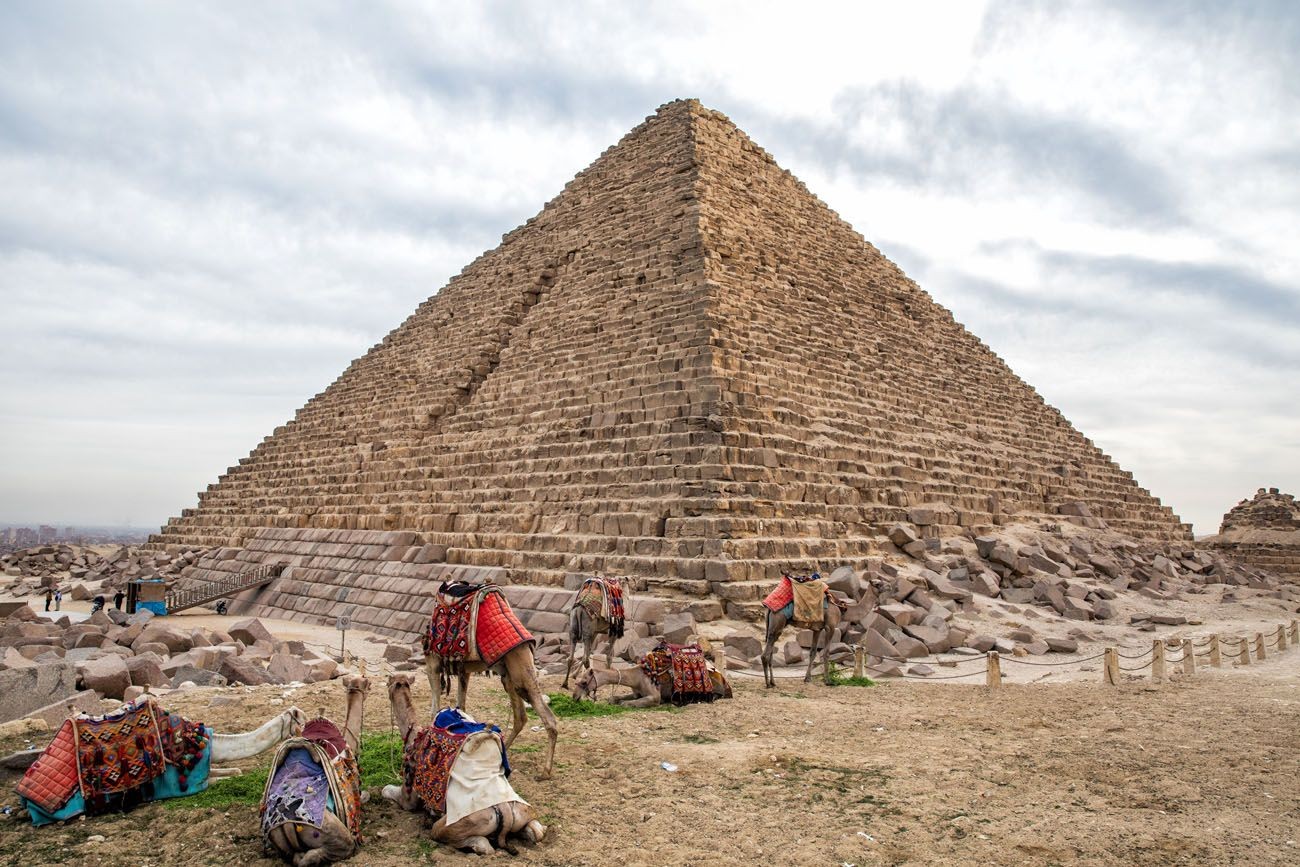 Pyramid of Menkaure
Pyramid of Menkaure
3.4. The Great Sphinx
A colossal limestone statue with the body of a lion and the head of a pharaoh, the Sphinx is one of the most iconic symbols of ancient Egypt. Stand in awe before this magnificent monument and ponder its mysterious origins.
3.5. The Valley Temple
Located next to the Sphinx, the Valley Temple is believed to have been used for the mummification process of King Khafre. Its well-preserved architecture offers a glimpse into ancient Egyptian funerary practices.
4. Inside the Great Pyramid: What to Expect
For an additional fee, visitors can venture inside the Great Pyramid and explore its internal chambers. While the interior is relatively sparse, the experience is both thrilling and humbling.
4.1. How Much Does it Cost to Enter the Great Pyramid?
As of 2025, the entrance ticket to the Great Pyramid costs 900 EGP per person, in addition to the general admission fee for the Giza Plateau.
4.2. What Will You See Inside the Great Pyramid?
Inside the pyramid, you’ll navigate through narrow passageways and ascend the Grand Gallery, a towering corridor with corbelled walls. The main attraction is the King’s Chamber, which houses an empty granite sarcophagus.
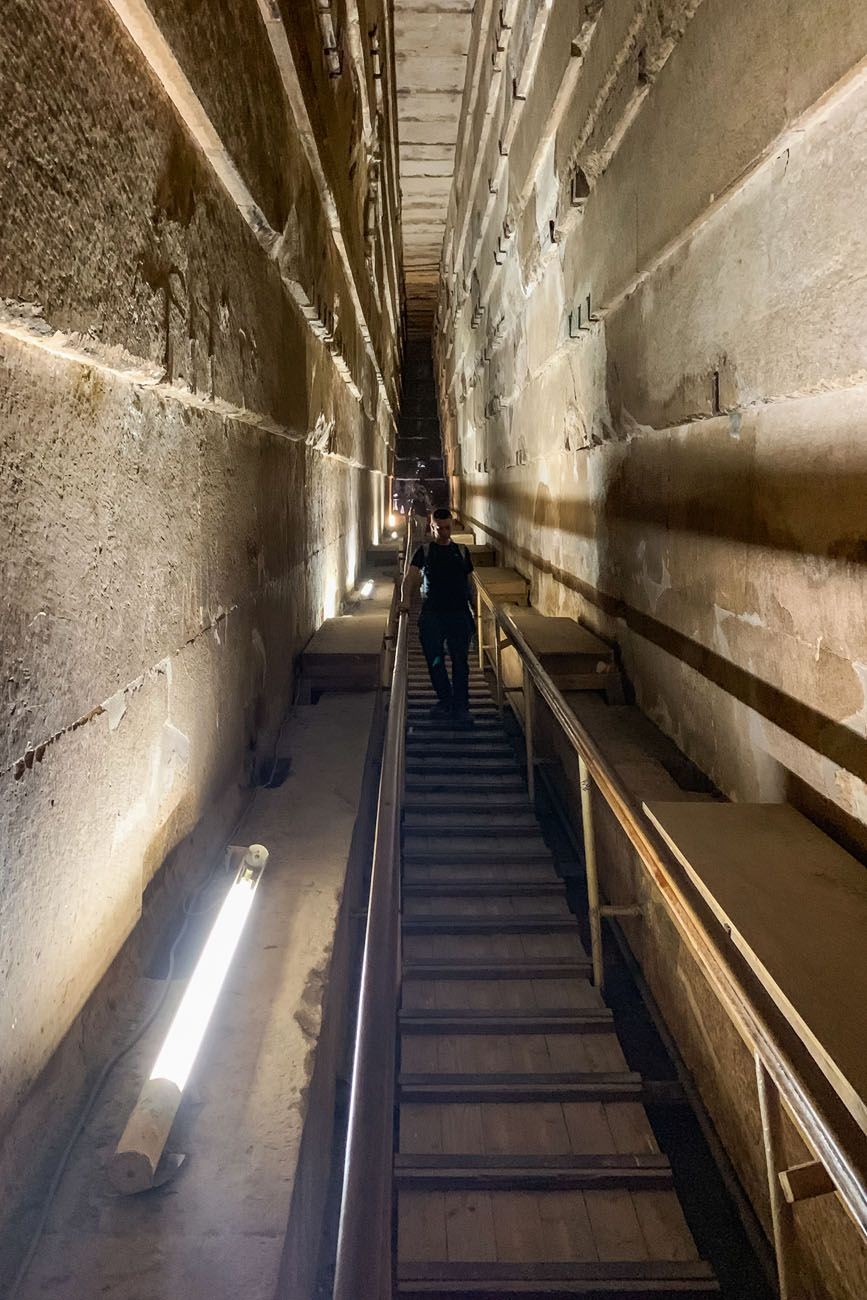 Grand Gallery Great Pyramid
Grand Gallery Great Pyramid
4.3. Is Entering the Great Pyramid Worth the Cost and Effort?
Whether or not entering the Great Pyramid is worth it depends on your personal preferences. Some visitors find the experience underwhelming due to the lack of artifacts and the crowded conditions. Others are thrilled by the opportunity to stand inside an ancient wonder of the world.
5. Capturing the Perfect Great Pyramid Photos
The Great Pyramid offers countless opportunities for stunning photographs. Whether you’re an amateur photographer or a seasoned pro, here are some tips for capturing the perfect shot.
5.1. Where Are the Best Photo Spots at the Giza Plateau?
Some of the best photo spots at the Giza Plateau include:
- Panoramic Point: Offers a panoramic view of all three main pyramids.
- In Front of the Sphinx: Provides a close-up view of the Sphinx with the pyramids in the background.
- From the Helicopter Pad: A unique perspective of the pyramids from a slightly elevated position.
- On a Camel Ride: A classic photo opportunity with the pyramids as a backdrop.
5.2. What Time of Day is Best for Photography?
The golden hours, shortly after sunrise and before sunset, offer the best lighting conditions for photography. During these times, the soft, warm light enhances the colors and textures of the pyramids.
5.3. What Photography Equipment Should You Bring?
Essential photography equipment includes a camera (DSLR, mirrorless, or smartphone), a versatile lens (wide-angle to telephoto), a tripod for steady shots, and extra batteries and memory cards.
6. Ethical Considerations for Great Pyramid of Giza Tourism
As a responsible traveler, it’s essential to consider the ethical implications of your visit to the Great Pyramid. By making informed choices, you can help preserve this ancient site for future generations.
6.1. Avoiding Animal Abuse
Camel and horse rides are popular activities at the Giza Plateau. However, there have been reports of animal abuse. If you choose to take a ride, ensure the animals are well-cared for and not overworked.
6.2. Respecting Local Culture
Egypt is a predominantly Muslim country with conservative customs. Dress modestly and be respectful of local traditions and beliefs.
6.3. Supporting Sustainable Tourism
Choose tour operators and accommodations that prioritize sustainability and benefit local communities.
7. Beyond the Great Pyramid: Exploring Cairo and Beyond
While the Great Pyramid is undoubtedly a highlight of any trip to Egypt, there are many other attractions to explore in Cairo and beyond.
7.1. The Egyptian Museum
Home to an unparalleled collection of ancient Egyptian artifacts, including treasures from Tutankhamun’s tomb, the Egyptian Museum is a must-see for history buffs.
7.2. Islamic Cairo
Explore the historic mosques, madrasas, and bustling bazaars of Islamic Cairo, a UNESCO World Heritage Site.
7.3. Luxor and the Valley of the Kings
Journey south to Luxor, home to the magnificent Karnak Temple, Luxor Temple, and the Valley of the Kings, where pharaohs were buried in elaborately decorated tombs.
7.4. Nile River Cruise
Embark on a relaxing Nile River cruise and experience the beauty of Egypt from a unique perspective.
8. Accommodations Near the Great Pyramid of Giza
Choosing the right accommodation can enhance your experience at the Great Pyramid. Several hotels offer stunning views of the pyramids and convenient access to the Giza Plateau.
8.1. Marriott Mena House
A historic hotel with luxurious accommodations and breathtaking views of the Great Pyramid.
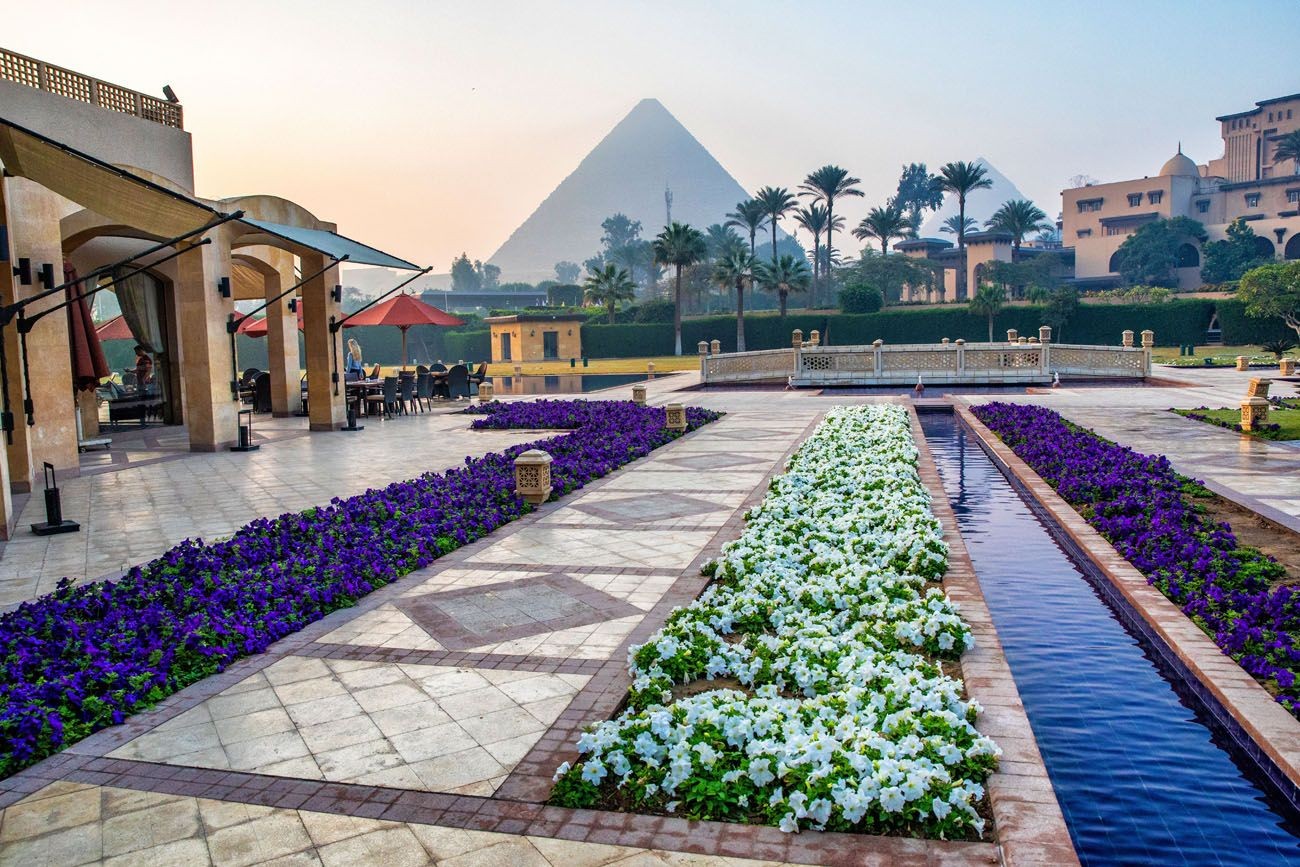 Pyramid Hotel View
Pyramid Hotel View
8.2. Pyramids View Inn
A budget-friendly option with comfortable rooms and a rooftop terrace offering panoramic views of the pyramids and the Sphinx.
8.3. Great Pyramid Inn
A charming hotel with a rooftop terrace providing stunning views of the Pyramids of Giza.
9. Dining Near the Great Pyramid of Giza
Sampling local cuisine is an essential part of any travel experience. Several restaurants near the Great Pyramid offer delicious Egyptian dishes with stunning views.
9.1. Local Egyptian Cuisine
Try traditional Egyptian dishes such as ful medames (fava bean stew), koshari (a mix of pasta, rice, and lentils), and ta’ameya (falafel).
9.2. Restaurants with Pyramid Views
Several restaurants near the Giza Plateau offer stunning views of the pyramids, including 139 Pavilion at the Marriott Mena House and Khufu’s Restaurant.
9.3. Food Safety Tips
To avoid foodborne illness, eat at reputable restaurants, drink bottled water, and avoid raw or undercooked foods.
10. Great Pyramid of Giza Tourism: Safety and Security Tips
Ensuring your safety and security is paramount when traveling to the Great Pyramid. Here are some essential tips to keep in mind.
10.1. Staying Safe in Cairo and Giza
Cairo and Giza are generally safe for tourists, but it’s important to be aware of your surroundings and take precautions against petty theft and scams.
10.2. Scams to Avoid
Be wary of touts and vendors who may try to overcharge you for goods or services. Negotiate prices in advance and avoid unlicensed tour guides.
10.3. Emergency Contact Information
Keep a list of emergency contact information, including the local police, ambulance, and your embassy or consulate.
11. Essential Phrases to Know in Arabic
Learning a few basic Arabic phrases can enhance your interactions with locals and show respect for their culture.
11.1. Greetings and Basic Phrases
- Hello: Ahlan
- Goodbye: Ma’a as-salama
- Thank you: Shukran
- You’re welcome: Afwan
- Please: Min fadlak (to a man) / Min fadlik (to a woman)
11.2. Numbers and Prices
Knowing how to count in Arabic can be helpful when negotiating prices in markets and shops.
11.3. Asking for Directions
Learning how to ask for directions can help you navigate unfamiliar areas.
12. Events and Festivals Near the Great Pyramid of Giza
Throughout the year, several events and festivals take place near the Great Pyramid, offering a unique glimpse into Egyptian culture and traditions.
12.1. Cairo International Film Festival
An annual film festival showcasing the best of Egyptian and international cinema.
12.2. Moulid an-Nabi (The Prophet’s Birthday)
A religious festival celebrating the birthday of the Prophet Muhammad.
12.3. Sham el-Nessim (The Smelling of the Breeze)
An ancient Egyptian festival celebrating the arrival of spring.
13. Booking Tours and Guides for the Great Pyramid of Giza
Hiring a knowledgeable tour guide can greatly enhance your experience at the Great Pyramid.
13.1. Benefits of Hiring a Tour Guide
A tour guide can provide valuable insights into the history and significance of the pyramids, as well as help you navigate the Giza Plateau and avoid scams.
13.2. How to Find a Reputable Tour Operator
Look for tour operators with positive reviews, licensed guides, and a commitment to ethical tourism practices.
13.3. Private vs. Group Tours
Choose between a private tour for a more personalized experience or a group tour for a more budget-friendly option.
14. Understanding the History of the Great Pyramid of Giza
Delving into the history of the Great Pyramid will deepen your appreciation for this ancient wonder.
14.1. Construction and Purpose
The Great Pyramid was built as a tomb for Pharaoh Khufu (Cheops) during the Fourth Dynasty (around 2580-2560 BC).
14.2. Theories and Mysteries
Numerous theories and mysteries surround the construction and purpose of the Great Pyramid, adding to its allure.
14.3. Preservation and Conservation Efforts
Efforts are ongoing to preserve and conserve the Great Pyramid for future generations.
15. Exploring the Giza Plateau on Foot, Camel, or Horse
There are several ways to explore the Giza Plateau, each offering a unique perspective.
15.1. Walking
Walking allows you to explore the Giza Plateau at your own pace and appreciate the details of the pyramids and surrounding structures.
15.2. Camel and Horse Rides
Camel and horse rides offer a classic photo opportunity and a chance to explore the desert dunes around the pyramids. However, it’s important to ensure the animals are well-cared for and not overworked.
15.3. Hiring a Driver
Hiring a driver can save you time and energy, allowing you to visit all the main attractions on the Giza Plateau with ease.
16. Nearby Attractions to the Great Pyramid of Giza
Explore attractions nearby the Great Pyramid of Giza to maximize your travel experience.
16.1. The Solar Boat Museum
The Solar Boat Museum houses the reconstructed Khufu ship, an ancient vessel believed to have transported the pharaoh’s soul to the afterlife.
16.2. Memphis and Saqqara
Visit Memphis, the ancient capital of Egypt, and Saqqara, home to the Step Pyramid of Djoser, the oldest complete stone building complex in Egypt.
16.3. Dahshur
Explore the pyramids of Dahshur, including the Bent Pyramid and the Red Pyramid, which offer a glimpse into the evolution of pyramid construction.
17. The Future of Great Pyramid of Giza Tourism
The future of Great Pyramid of Giza tourism looks promising, with ongoing efforts to enhance the visitor experience and preserve this ancient wonder.
17.1. New Developments and Projects
Several new developments and projects are underway to improve the infrastructure and facilities at the Giza Plateau.
17.2. Sustainable Tourism Initiatives
Sustainable tourism initiatives are being implemented to minimize the environmental impact of tourism and benefit local communities.
17.3. Preserving the Site for Future Generations
Preservation efforts are ongoing to ensure the Great Pyramid remains a symbol of human ingenuity for centuries to come.
18. Frequently Asked Questions (FAQs) About Great Pyramid of Giza Tourism
Here are some frequently asked questions about visiting the Great Pyramid of Giza:
18.1. Can You Climb the Great Pyramid of Giza?
No, climbing the Great Pyramid is strictly prohibited.
18.2. How Long Should You Spend at the Giza Plateau?
Plan to spend at least three hours at the Giza Plateau to see the main attractions.
18.3. What is the Best Way to Avoid Crowds?
Visit the Giza Plateau early in the morning or later in the afternoon to avoid the crowds.
18.4. Are There Restrooms at the Giza Plateau?
Yes, there are restrooms located near both entrances of the Giza Plateau.
18.5. Can You Take Photos Inside the Pyramids?
You can take photos inside the Great Pyramid with a cellphone, but photography with a camera is not permitted.
18.6. Is it Safe to Drink Tap Water in Cairo?
No, it’s recommended to drink bottled water in Cairo.
18.7. What Currency is Used in Egypt?
The Egyptian pound (EGP) is the official currency of Egypt.
18.8. Do People Speak English in Cairo?
English is widely spoken in tourist areas of Cairo.
18.9. What Should You Wear When Visiting the Pyramids?
Wear comfortable clothing and sturdy walking shoes.
18.10. How Can SIXT.VN Help Plan My Trip to Egypt?
SIXT.VN offers tailored travel consultation, providing information on transportation, accommodation, and local guides to ensure a seamless and enriching experience. Contact us today to start planning your dream trip to Egypt!
Conclusion: Plan Your Trip with SIXT.VN
Embark on an extraordinary adventure to the Great Pyramid of Giza, and let SIXT.VN guide you through every step of the planning process. Though based in Vietnam, our expert travel consultation services can assist you in creating a seamless and unforgettable journey to Egypt. Discover the wonders of the ancient world with confidence, knowing that SIXT.VN is here to help you make the most of your travel experience.
Address: 260 Cau Giay, Hanoi, Vietnam.
Hotline/Whatsapp: +84 986 244 358.
Website: SIXT.VN.



